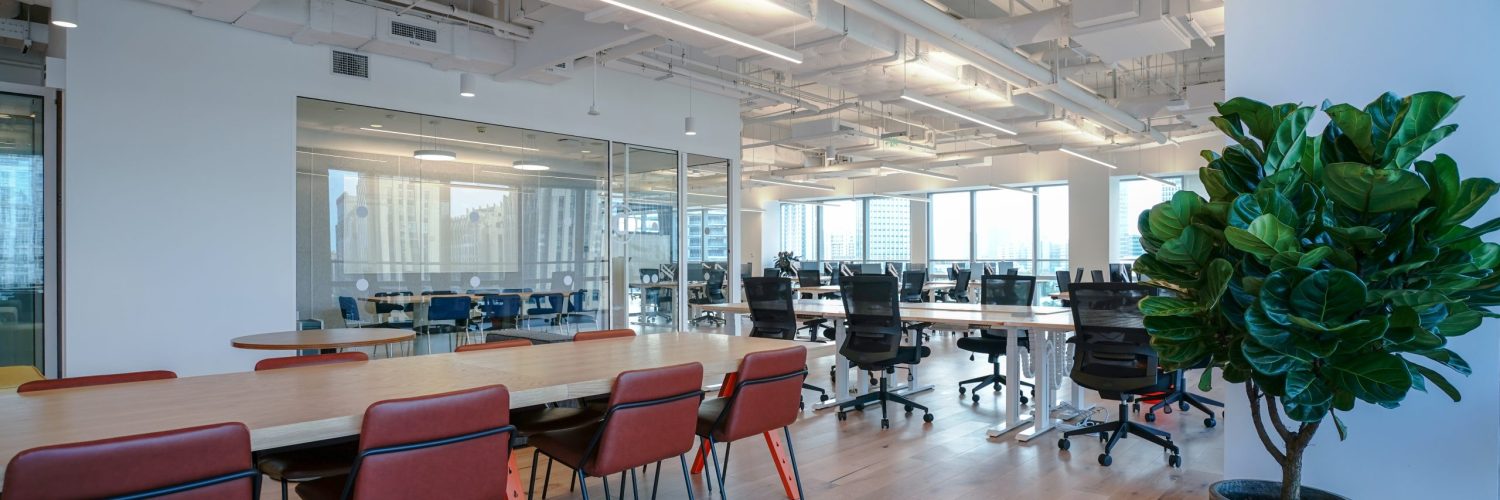The Power of Thoughtful Interior Design in Boosting Workplace Productivity
Creating a conducive work environment goes beyond simply providing desks and chairs for employees. The design of an office space plays a crucial role in shaping the mood, motivation, and productivity of its occupants. Studies have shown that thoughtful interior design choices can significantly impact employee satisfaction and performance. Let’s explore the psychology of space and how it can transform offices into productivity hubs.
The Psychology of Space
Color, lighting, and layout all play a role in influencing mood and productivity in the workplace. For example, incorporating calming shades of blue or green can promote a sense of tranquility and focus. On the other hand, vibrant colors like yellow or orange can instill energy and creativity. Proper lighting can also make a difference – natural light has been linked to increased productivity and well-being, while harsh fluorescent lighting can cause eye strain and fatigue. The layout of an office space is equally important, with open layouts fostering collaboration and closed-off spaces providing privacy for deep focus work.
Creating a Functional Workspace
Ergonomic furniture and layout are essential for promoting health and comfort in the workplace. Employees who are comfortable in their workspace are likely to be more focused and productive. Investing in adjustable desks and chairs, as well as providing areas for standing or stretching, can contribute to overall well-being. A well-designed workspace that considers the flow of movement and accessibility of tools can also improve workflow and efficiency, reducing unnecessary time wasted on searching for materials or navigating a cluttered environment.
Enhancing Collaboration and Creativity
Open and collaborative workspaces have become increasingly popular in modern office design, with the aim of fostering teamwork and creativity. By breaking down physical barriers and creating shared spaces for brainstorming and group work, employees are more likely to collaborate and exchange ideas. Design choices such as communal areas, flexible seating arrangements, and writable surfaces can encourage communication and idea-sharing. The physical environment can be a powerful tool in fostering a culture of collaboration and innovation.
Personalization and Employee Satisfaction
Employees are more likely to feel invested in their work when they have a say in their environment. Allowing for personalization of workspaces, such as incorporating plants, photos, or artwork, can create a sense of ownership and belonging. Seeking input from employees on design choices and preferences can also enhance job satisfaction and morale. A workspace that reflects the personalities and values of its occupants can lead to a more engaged and motivated team.
Case Studies and Success Stories
Several companies have experienced positive outcomes from redesigning their office spaces with productivity in mind. For example, a tech company that implemented flexible workstations and designated quiet zones saw an increase in employee focus and collaboration. A design agency that introduced natural elements and biophilic design principles reported a boost in creativity and well-being among staff members. These success stories highlight the tangible impact of thoughtful interior design on workplace productivity and employee satisfaction.
Case Study: August Group – 35 Britain Street
Nestled in Moss Park, Toronto, 35 Britain Street stands amidst the historic brick and beam edifices that have witnessed the neighborhood’s transformation, spurred by extensive redevelopment initiatives. The area is known for its dynamic mix of high-rise residences, contemporary office towers, and unique boutique workspaces, with a sprinkling of traditional retail establishments. It is also recognized for housing some of Toronto’s most innovative creative workspaces.
In a collaborative venture with the rapidly expanding commercial real estate investors, August Group, Abeco Building Group played a pivotal role in the fruition and delivery of the redevelopment. This collaboration ensured a cohesive construction process from start to finish, fulfilling the client’s vision. The undertaking involved an extensive overhaul of a century-old brick-and-beam structure, updating it with new structural components, modern mechanical and electrical systems, improved accessibility features, new elevators, and refreshed finishes throughout, all while aligning with the latest standards of the Ontario Building Code.


Conclusion
Interior design is a powerful tool that can transform offices into productivity hubs. By considering the psychology of space, creating functional workspaces, enhancing collaboration and creativity, prioritizing personalization, and learning from successful case studies, companies can harness the potential of design to boost employee performance and satisfaction. Investing in thoughtful interior design is not just about aesthetics – it’s about creating a work environment that supports the well-being and productivity of employees.
About Abeco Building Group
Based in Toronto, Ontario, Canada, Abeco Building Group is a leading premium company specializing in interior construction, design-build, and integrated project delivery. We serve a variety of sectors, including retail, commercial, high-end restaurants, and healthcare, with a primary focus on the Greater Toronto Area. Our comprehensive expertise covers the entire project lifecycle, encompassing initial design and construction, project management, and post-completion support.



